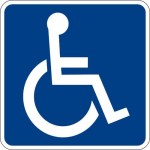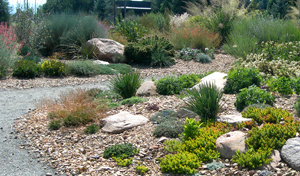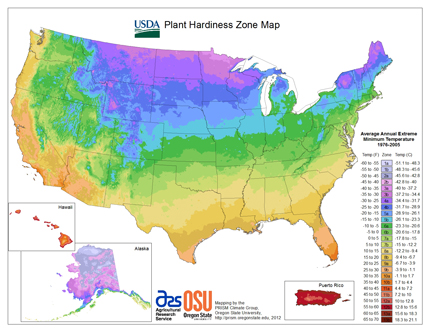by Matt Corrion
On March 15, 2012, facilities across the United States must comply with the revised ADA (Americans with Disabilities Act) design standards adopted in the 2010 Standards for Accessible  Design.
Design.
The 2010 Standards set minimum requirements for newly designed and constructed or altered State or local government facilities, public accommodations, and commercial facilities to be readily accessible to and usable by individuals with disabilities.
I have reviewed the new standards, and they are pretty extensive. Property owners and designers should be aware of some of the changes that will be required when constructing or altering a facility.
The provision requiring accessible means of entry/exit for swimming pools has gained a lot of attention. On March 15th, the US Attorney General signed an extension of 60 days for this particular provision, while also opening up a public comment period.
The swimming pool provision, along with other key new provisions, as taken from the ADA website, include:
2. Recreational Boating Facilities (Sections 235, 1003)
If boat slips are provided at a boating facility, the minimum number that must be accessible depends upon the size of the facility. Accessible boat slips must be dispersed throughout the various types of boat slips.
Where boarding piers are provided at boat launch ramps, at least 5% (but no fewer than one) must be accessible. Gangways that are part of a required accessible route are to be accessible, subject to certain enumerated exceptions.
4. Fishing Piers and Platforms (Sections 237, 1005)
Newly designed, newly constructed, or altered fishing piers must provide accessible routes, subject to the same exceptions permitted for gangways. At least 25% of guardrails or handrails must be no higher than 34 inches and must be dispersed. Clear floor or ground space must be provided at each accessible railing, and turning space must be provided on the pier.
5. Golf Facilities (Sections 238, 1006)
Newly constructed and altered golf facilities must have either an accessible route or golf car passages with a minimum width of 48 inches connecting accessible elements and spaces within the boundary of the golf course. An accessible route must be provided to the golf car rental area, bag drop-off areas, and other elements that are outside the boundary of the golf course. One or two teeing grounds (depending on the total number provided) per hole must be accessible.
If weather shelters are provided, a golf car must be able to enter and exit the shelters. Certain percentages of practice teeing grounds, practice teeing stations at driving ranges, and putting greens must be accessible.
6. Miniature Golf (Sections 239, 1007)
At least fifty percent of all holes on a miniature golf course must be accessible. These accessible holes must be consecutive, and they must be on an accessible route. The last accessible hole must be on an accessible route that connects to the course entrance or exit without going back through other holes.
7. Play Areas (Sections 240, 1008)
Play areas designed, constructed, and altered for children ages two and over in a variety of settings, including parks, schools, childcare facilities, and shopping centers, are covered.
Accessible ground and elevated play components, accessible routes, ramps and transfer systems (typically a platform or transfer steps), and accessible ground surfaces must be provided.
8. Swimming Pools, Wading Pools, and Spas (Sections 242, 1009)
Accessible means of entry/exit are required for swimming pools. Such accessible means of entry include a pool lift or sloped entry, and either a transfer wall, transfer system, or pool stairs. Wading pools must provide a sloped entry, and spas must provide a pool lift, transfer wall, or transfer system. Wave action pools, leisure rivers, and sand bottom pools where user access is limited to one area shall not be required to provide more than one accessible means of entry, either a pool lift, sloped entry, or a transfer system.
This is the official blog of Outdoor Design Group, Colorado Landscape Architects. For more information about our business and our services, click here.
Related Posts:
by Matt Corrion
You may have heard that you can save big bucks on water and maintenance by renovating your landscaping to be more water-efficient.

But, did you know that Cities across the country will pay you cash to do it?
As water supplies dwindle and populations rise, many municipalities are offering great incentives for reducing water use in the landscape. When property owners, businesses, or managers factor in the payback from these rebates along with the water and maintenance savings, a landscape renovation can make a lot of sense.
The 2 Main Types of Rebates
Generally speaking, incentives for reducing water use fall into two categories. The first category is paying customers to remove landscapes that have high water use and replace them with attractive low water use plantings, and the second category is to provide rebates for purchasing and installing irrigation components that reduce water use and that are more efficient than older systems.
As we have discussed in the past, the real water savings (as well as the largest rebates) come from replacing high water use lawns and landscaping, with new plantings that require less water and are more adapted to the local climate. There are many benefits to this approach- see The Top 10 Benefits of Making Landscaping More Water Efficient.
14 Specific Examples of Rebate Programs
Incentives for Removing Turf: $0.75 per square foot for single family homes and multi-family or commercial properties.
Equipment Rebates: Rebates for smart controllers, rain sensors, rotary nozzles, and equipment for removing sod and placing compost.
Additional Program Notes: Rebates of up to $150.00 are also offered for rainwater collection systems, and with the installation of a rainwater collection system the incentives double to $1.50 per square foot. Residents may also receive a $20.00 credit for attending a water efficiency class.
Equipment Rebates: Rebates for smart water controllers, weather sensors, and moisture sensors for single homes and multi-family or commercial properties.
Additional Program Notes: Rebates include 50% of the purchase price for valves, and $75.00 per drip zone installed.
Incentives for Removing Turf: $1.00 per square foot, up to $10,000 for single family homes, and up to $25,000 for multi-family or commercial properties.
Additional Program Notes: Rebates are also available for removing old hardscapes, and for seeding areas with native grasses.
Incentives for Removing Turf: $18.50 per 1,000 gallons of water saved for multi-family or commercial properties.
Equipment Rebates: Single family residential customers can receive $2.00 per efficient nozzle and $100.00 for weather-based smart controllers with rain sensors. Multi-family or commercial properties can receive $2.00 per efficient nozzle, and 25% of the cost of a smart controller.
Equipment Rebates: Single family residential customers can receive up to $1,000 for installing smart controllers and rain sensors. Multi-family or commercial properties can receive up to $5,000 for installing smart controllers and rain sensors.
Additional Program Notes: Rebates are also available for rotary nozzles, mpr spray heads, pressure reducing drip valves, and backflow prevention devices specifically made for drip systems.
Incentives for Removing Turf: $0.25 per square foot for installing drought tolerant Buffalo Grass for single family homes and multi-family or commercial properties.
Equipment Rebates: Rebates of $50.00 for moisture sensors, and 50% of the purchase price of a drip irrigation system are available for single family homes and multi-family or commercial properties.
Equipment Rebates: Single family residential customers can receive up to $550.00 for installing smart controllers, rain sensors, and rotary nozzles. Multi-family or commercial properties can receive up to $3,550.00 for installing smart controllers, rain sensors, and rotary nozzles.
Additional Program Notes: Rotary nozzle rebates are available for up to $200.00 for single family residential, and up to $2,000 for multi-family or commercial properties. Rebates are available for 50% of the purchase price of smart controllers and rain sensors.
Incentives for Removing Turf: Rebates of up to $1,650 are available for single family homes and multi-family or commercial properties.
Equipment Rebates: Rebates of up to $250.00 are available for installing smart controllers.
Incentives for Removing Turf: Up to $3,000 for single family homes and multi-family or commercial properties.
Equipment Rebates: Single family residential customers can receive up to $250.00 for installing smart controllers. Multi-family or commercial properties can receive up to $1,250.00 for installing smart controllers.
Additional Program Notes: A minimum area of 1,000 square feet of turf must be removed to qualify for turf removal incentives.
Incentives for Removing Turf: $1.50 to $1.00 per square foot, up to $300,000 for single family and multi-family or commercial properties.
Equipment Rebates: 50% of the cost of smart controllers, and $25.00 for rain sensors for single family and multi-family or commercial properties.
Incentives for Removing Turf: $1.50 per square foot up to $3,000 for single family homes, and $1.50 per square foot up to $9,000 for multi-family or commercial properties.
Equipment Rebates: Single family residential customers can receive up to $400.00 for installing smart controllers. Multi-family or commercial properties can receive $25.00 per station up to 68 stations ($1,700) for installing a smart controller.
Additional Program Notes: Rebates of $0.50 for every gallon of storage capacity up to 400 gallons are offered for rainwater collection systems.
Incentives for Removing Turf: $0.75 per square foot up to $2,000 is available for for single family homes, and $0.75 per square foot up to $20,000 is available for multi-family or commercial properties.
Equipment Rebates: Rebates are available for smart controllers, rain sensors, rotary nozzles, and dedicated landscape meters.
Additional Program Notes: Rebates of $1.50 per square foot up to $30,000 are also available for commercial properties through a “cost sharing areas” program.
Equipment Rebates: Single family residential customers can receive up to $375.00 in equipment rebates. Multi-family properties can receive up to $500.00 for new equipment.
Additional Program Notes: Rain water harvesting rebates of up to $5,000 are available for no-pressurized or pressurized systems.
Incentives for Removing Turf: Rebates of up to $400.00 are available for reducing water bill for single family homes and multi-family or commercial properties.
Equipment Rebates: Rebates of up to $3,200 are available for installing smart controllers, rain sensors, and rotary nozzles.
Additional Program Notes: Incentives are offered for capping irrigation zones and/or converting existing irrigation systems to drip.
These incentive and rebate programs are typically limited to a maximum allowable rebate amount based on the area of the project, and the purchase price of the irrigation components. Many of the programs also are only available on a first come first serve basis. With limited funding many municipalities exhaust their funds in the first few months of the year. Other program requirements include selecting plants from specific drought tolerant or native plant lists, percentage of plant area coverage, and the make and model of irrigation components.
Because of the complexity of the projects and the paperwork involved, it may make sense to have a landscape architect assist you for a moderate fee. These professional consultants can prepare any plans that are needed, submit applications, gain approval from local building departments and HOA’s, and maximize the potential rebate amount you will get back.
In addition, most states require a licensed landscape architect to prepare plans for any major renovation on a commercial or larger residential property. The fees for these services are often offset by the savings that come from having a good plan that can be accurately bid and installed by contractors.
So, if you are looking to make your property more sustainable, update it’s image, and save on maintenance and water, look into what programs may be available in your area.
This is the official blog of Outdoor Design Group, Colorado Landscape Architects. For more information about our business and our services, click here.
Related Posts:
 Design.
Design.


